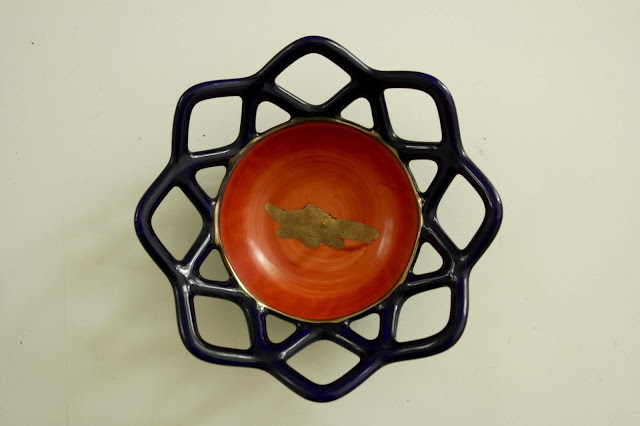In my book on Japanese treasures is a selection of cups, imperfect and irregular, they are the center of an otherwise empty photograph. The relation between portraiture and these photos is direct and almost raw, uncensored and painfully fragile as we treasure the quality.
In my atelier the paintings, portraits or heads, are stacked cups. They are containments, no longer able to communicate their thoughts and the only thing that remains is what they looked like. 'Kopjes' becomes an euphemism for what happens when time passes. The painting ages, but we are long gone.
How to flee from the abyss? To shout at the top of our voice? This old Japanese ceramic dish contains everything I like, a shape that rebels with simplicity, colours deep and bright, a reflection of light on the gold painted fish and a blue that pulls your heartstrings.
Last week I was hiding under a tree in a forest, the rain was very loud and drained every other noise. The air smelled of pine trees, leaves, earth and mushrooms and it was sunny while it rained. It's impossible to paint this, or even photograph it.
The memory of this evening walk is in my 'kopje', it is my national treasure and when I leave, I will take it with me.




